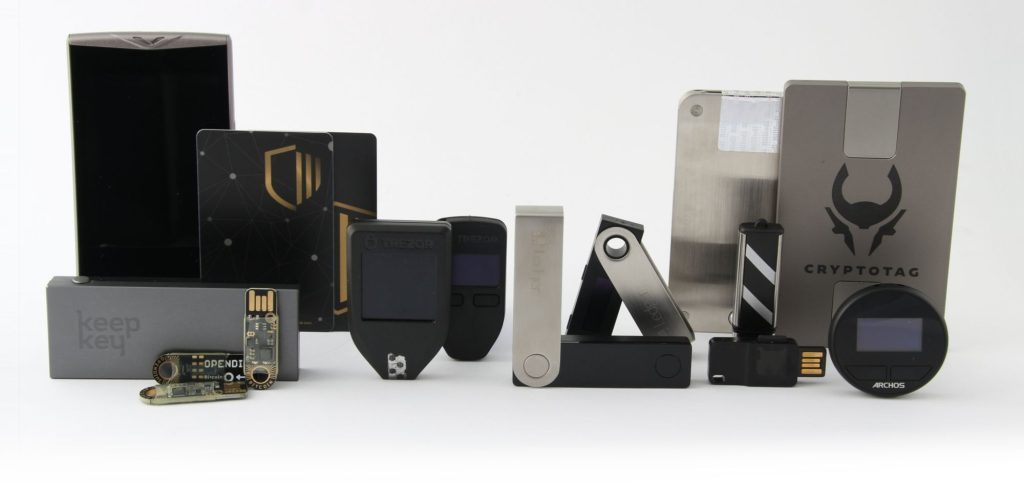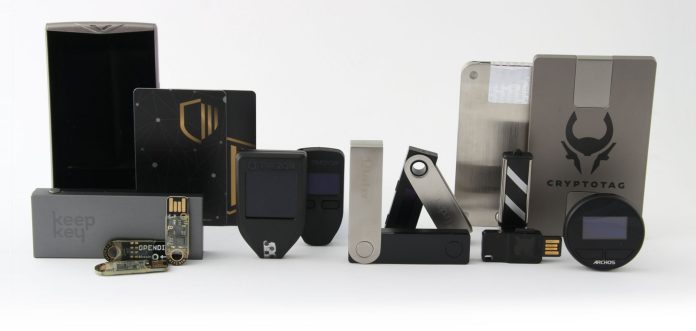
In the fast-paced world of cryptocurrencies, security is paramount. With the rise in cyber threats and hacking attempts, it has become crucial for investors and enthusiasts to protect their digital assets effectively. A hardware wallet is one of the most reliable ways to safeguard your crypto holdings. In this comprehensive guide, we will dive into what a hardware wallet is and how it works and discuss four essential notes to remember when using it in crypto.
What are Hardware Wallets?
A hardware wallet is a physical device that stores private keys to access cryptocurrency funds securely. Unlike software wallets that are connected to the internet or web-based platforms, hardware wallets operate offline, adding an extra layer of protection against online threats. These compact devices typically resemble USB drives or small handheld devices and ensure secure storage and transaction signing without exposing sensitive information to potential vulnerabilities.
How Does a Hardware Wallet Work?
Hardware wallets are equipped with specialized chips that facilitate cryptographic operations necessary for securely managing cryptocurrency transactions. When setting up a hardware wallet for the first time, users generate a unique seed phrase – usually consisting of 12 to 24 words – which serves as the backup and recovery mechanism for accessing funds in case of theft or device loss.
Once configured, users connect their hardware wallet to a computer or mobile device via USB or Bluetooth connection. When initiating a transaction or accessing funds online, the user’s private keys never leave the device; they are securely stored within the wallet’s internal memory. Transactions are signed internally on the device before being broadcast onto the blockchain network.
Importance of Using a Hardware Wallet
Now that we understand what a hardware wallet is and how it functions, let’s explore why it’s crucial to use one when dealing with cryptocurrencies:
Enhanced Security and Protection against Hacks
One of the primary reasons to opt for a hardware wallet is its unparalleled security features. As hardware wallets operate offline, they are not susceptible to online attacks or malware that can compromise software wallets or web-based platforms. With private keys securely stored within the device, hackers have minimal opportunities to access your funds.
Protection from Phishing Attacks
Phishing attacks are common in the crypto world, with scammers attempting to trick users into revealing their private keys and passwords through deceptive websites or emails. Using a hardware wallet, you can rest assured that your private keys remain safely stored within the device, reducing the risk of falling victim to such scams.
User-Friendly Interface and Accessibility
Despite their advanced security features, hardware wallets are designed to be user-friendly and accessible even for those with limited technical knowledge. Most devices come with intuitive interfaces and clear instructions, making it easy for beginners to set up and use without much hassle.
Backup and Recovery Options
With a hardware wallet, you are provided with a seed phrase during setup that serves as a backup mechanism for recovering your funds in case of loss or theft. Keeping this seed phrase offline in a secure location is crucial because it is the ultimate key to accessing your digital assets.
Notes when Using a Hardware Wallet in Crypto
Note 1: Choose a Reputable Hardware Wallet Brand
When selecting a hardware wallet for storing your cryptocurrencies, choosing one from a reputable brand is essential. Look for well-established companies known for their track record in security and reliability. Popular options include Ledger, Trezor, and KeepKey – renowned for their robust security measures.
Note 2: Verify the Authenticity of Your Hardware Wallet
Due to the popularity of hardware wallets, there have been instances where counterfeit devices have entered the market. Therefore, purchasing your hardware wallet directly from the manufacturer or authorized resellers is crucial to ensure its authenticity. Additionally, carefully inspect the packaging and security seals for any signs of tampering.
Note 3: Keep Your Firmware Updated
Hardware wallet manufacturers frequently update the firmware to address potential vulnerabilities and enhance device security. It is essential to regularly check for firmware updates and apply them promptly to ensure that your crypto assets remain protected against emerging threats.
Note 4: Protect Your Seed Phrase
As mentioned earlier, the seed phrase generated during the initial setup of your hardware wallet is crucial for recovering access to your funds. However, keeping this backup phrase safe from theft or loss is equally important. Consider using a fireproof and waterproof storage solution like a metal engraving plate or specialized recovery card. Avoid storing it digitally or in online cloud services, as they may be susceptible to hacking attempts.
The current prominent types of hard wallets.
With the rise of hacks and exploits, there is also an increasing demand for hardware wallets among cryptocurrency users. The information table below shows that the two most popular types of wallets are Ledger and Trezor. Ledger has two main products: Ledger Nano X and Ledger Nano S, while Trezor’s main product is Trezor One.
Ledger Nano X

The Ledger Nano X hardware wallet is arguably the most advanced, secure device at the mThe Ledger Nano X hardware wallet is arguably the most advanced and secure device at the moment for protecting your cryptocurrencies. The Ledger Nano X can be conveniently used with iPhone phones due to its Bluetooth connectivity. It allows you to manage cryptocurrencies anytime, anywhere, and transfer money easily. You can save 100 coins and more than 5,500 different digital assets at the same time. Additionally, you can manage and send NFTs directly on Ledger Live. The display is large and sharp, with two buttons and security with a PIN. Currently, this is Ledger’s most prominent product line. The only negative point compared to other wallets is the higher price.
Ledger Nano S
If the Nano X is the most complete version of the ledger, then the Nano S is the most popular. The Nano S has a few characteristics:
- Store 3-6 coins simultaneously and support more than 5,500 different ones.
- Connect to your computer via the USB cable and your Android phone via the adapter accessory.
- Small in size, lighter than Nano X.
- There is security with a PIN.
- Affordable price.
Trezor One
Trezor is a hardware wallet released in 2013 by the Czech Republic-based company SatoshiLabs, which is also one of the world’s oldest hardware wallet lines. Trezor One is one of its most prominent product lines with notable points:
- Support 1000+ coins and tokens: BTC, ETH, BNB, AXS … All managed through Trezor Suite web and desktop versions.
- Trezor One supports connecting Ronin wallet to manage AXS tokens, SLP of Axie Infinity game.
- A large electronic screen displaying transaction information and 2 physical buttons to help users send and receive.
- Connect to a computer via the included USB port or connect to an Android phone via an OTG adapter.
- Trezor One has a mid-range price.
Conclusion
Maintaining robust security measures is vital to safeguard your digital assets effectively in the world of cryptocurrencies. Hardware wallets offer unparalleled protection against online threats by storing private keys offline within a secure physical device. By following the four essential notes discussed in this guide – choosing a reputable brand, verifying authenticity, keeping firmware up-to-date, and protecting your seed phrase –you can significantly reduce the risks of storing and accessing crypto funds. Embrace the power of hardware wallets and enjoy peace of mind knowing that your investments are secure from potential cyber threats.


